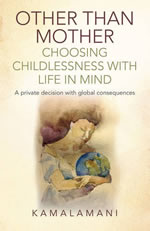Good Habits, Bad Habits: The Science of Making Positive Changes that Stick
Wendy Wood’s Good Habits, Bad Habits reflects her explanation of the subject of habit formation. Integrating her own research along with other scientific studies, Wood attempts to explain why bad habits are so hard to break and why good habits are so hard to sustain. Wood provides readers with an understanding of both the evolution of research regarding behavior change along with a look into how they can implement habit changing strategies in their own lives.
Commentary on Babette Rothschild’s New Book and Chart
I am a big fan of Rothschild. Her earlier book (2000) elevated awareness of the autonomic nervous system (ANS), the substrate of all health, in the psychotherapy world, and taught us to look for and precisely recognize ANS signals in order to appropriately support recovery from trauma. Her new book adds excellent additional detail, including a “six-categories-of-ANS” poster that can now be viewed on the wall of our classroom at CSES. The bulk of the book is about therapy insights, which I found to be excellent; my concerns were just in a few pages of her Chapter Two.
The problem for me starts with Rothschild’s description of Polyvagal Theory (PVT), which occupies two pages in the chapter. She summarizes PVT as being the discovery of the “ventral vagus” function as distinct from the previously-known “dorsal vagus” function, which is the foundation of the parasympathetic branch of the autonomic nervous system. Both down-regulate the heart, but in different ways. She states that calm states arise from the ventral branch, and that collapse states arise from the dorsal branch. This is not all wrong, but for a person of Rothschild’s immense professional stature, I was really hoping for more.
Through Windows of Opportunity
Through Windows of Opportunity, by neuroaffective psychotherapist Marianne Bentzen, and child psychologist and psychotherapist Susan Hart, is based on the presentations of four international leading psychotherapists concerning different neuroaffective approaches to child psychotherapy at a 2012 conference in Copenhagen. These presentations revolve around how the relationship between therapist and child can aid the child in overcoming traumas and insecure attachments in life by fostering a sense of emotional attunement and tolerance that stimulates development and change processes.
Four Ways to Click: Rewire Your Brain for Stronger, More Rewarding Relationships
Four Ways to Click: Rewire Your Brain for Stronger, More Rewarding Relationships is a self-help book designed to illustrate, via a strongly neuroscience-based framework, the nature of reader’s personal relationships. The goal of the book is, ostensibly, to identify the reader’s strong and weak relationships through included evaluations and map out actions that can improve them. The explicit goal is to change the way readers’ brains are wired through interventions that target four specific brain regions as outlined in the book’s “C.A.R.E. Plan.”
True Companions: A Book for Everyone About the Relationships That See Us Through
Reviewed by Nancy Eichhorn
How can I feel connected to someone I have never met and in turn feel more engaged in my own real-life...
The New Mind-Body Science of Depression
To better understand mental illness, psychiatrists have in the past looked at mental illness via a medical model. However, in The New Mind-Body Science of Depression, Vladimir Maletic and Charles Raison claim that we oversimplify major depression by looking at it as a discrete illness. As a result, we overlook the significance of research that doesn’t support that view. They suggest that the answers to many of our questions about major depression can be found by analyzing and integrating information we already have, but in the past ignored. They seek to map out how we came to view major depression as a discrete illness and provide evidence against that view. By doing so, they demonstrate that by sticking to misconceptions about mental illness, we are oblivious to important information that can provide some of the answers we’ve been searching for.
The Pursuit of Endurance: Harnessing the Record-Breaking Power of Strength and Resilience
I’m curious about where their inner reserves come from and how they draw on them in the heat of misery, pain, suffering. Where does the resiliency come from? Is it from God? Instilled in our being at birth?
Pharr Davis delves into these questions with intriguing responses; her own and others she’s met on the journey.
Contemplative Psychotherapy Essentials
I sat down to read Contemplative Psychotherapy Essentials with an agenda in mind. I felt rushed to get through the chapter yet found myself slowing, breathing. I settled into the chair. The have-to-do’s vanished. I was simply and completely present with the text. Wegela offers quotes from other Buddhist teachers, case examples from clients and students. Terms are defined and demonstrated. The material is accessible, user-friendly. A true invitation to not only read about but to also personally experience it, try it out, let it flow within and through.
Passion & Presence: A Couple’s Guide to Awakened Intimacy and Mindful Sex
One simple sentence says it all: “Great sex is a mind-set, not a skill-set.”
Maci Daye embodies the essence of her new book, Passion & Presence: A Couple’s Guide to Awakened Intimacy and Mindful Sex, in this short statement. Yes, readers receive exercises to practice concepts presented throughout the book, but the crux of success resides in mindfulness including presence, curiosity, and authenticity, and a commitment to one’s self, one’s partner and the relationship.
Infant and Toddler Development: From Conception to Age 3. What Babies Ask of Us
Mary Jane Maguire-Fong and Marsha Peralta, recently published, Infant and Toddler Development: From Conception to Age 3. What Babies Ask of Us. In their “Preface”, they acknowledged my mom as a colleague and friend who has been “a source of wisdom, counsel, and inspiration in this work” (pg. x). Peralta noted, “We have so appreciated her contributions to our thinking and perspective”













